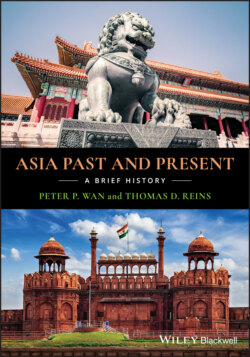Читать книгу Asia Past and Present - Peter P. Wan - Страница 40
The Founding of China’s First Empire: The Qin Dynasty (221–207 BCE)
ОглавлениеThe State of Qin produced one of the “Seven Overlords” fighting for hegemony during the Warring States period but it was weak, backward, and geographically on the fringe of “China Proper.” Its king, however, made it a viable contender after he employed Legalist Shang Yang as his advisor and imposed draconian reforms. His descendant, the future Qin Shihuang, continued to carry out bold and drastic Legalist reforms with the assistance of his prime minister Li Si (284–208 BCE) until he had turned Qin into a model of “rich country, strong army.” In 10 years of continuous wars, he defeated the other six overlords and unified all of China Proper for the first time in China’s history.
Shang Yang (390–338 BCE) was a Legalist who believed that it is agriculture and war that make a nation rich and strong. As advisor to the king of Qin, he carried out reforms to achieve that goal. He rewarded peasants with exemption from labor service for increasing their crop yields and bringing new lands under cultivation, and he abolished aristocrats’ inherited privileges and ranked men according to their contribution in war. These reforms naturally incurred the hatred of the old‐guard aristocrats. When the old king died, they had Shang Yang executed by quartering: His limbs and neck were tied to five horses, and drawn until his body was torn to pieces.
